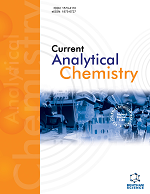
Full text loading...
We use cookies to track usage and preferences.I Understand

Crab hemolymph are rich in medicinally important secondary metabolites.
The objective of this study was to isolate, identify, and establish the crab hemolymph-derived secondary metabolites for the antifungal activity.
Several brachyuran crabs were investigated against 10 pathogenic strains. The disc diffusion method was used to investigate hemolymph extracts to identify potential brachyuran crabs showing antifungal activity. The moderately purified hemolymph was taken for RP-HPLC using a C-18 column. The obtained GC-MS-NIST formula/compound details were used to unveil the possible structures of obtained compounds. Individual compounds were confirmed by comparing the obtained structures with 1H NMR & 13C NMR results. The isolated Sparsomycin was subjected to a molecular docking Crystal Structure of Fungal RNA Kinase (PDB ID: 5U32).
Notably, most of the crab species in this study exhibited activity against various strains of fungi. The current findings demonstrated that the hemolymph of the crab Dromia dehaani exhibits broad-spectrum activity against pathogenic fungi. The D. dehaani showed the uppermost antimicrobial activity, and the most potent extracts obtained from the sponge crab, D. dehaani, displayed activity against several fungal organisms that included Candida albicans and Aspergillus niger. D. dehaani was selected for detailed investigations as the hemolymph of D. dehaani has the potential to be developed as an anti-microbial agent to treat infections.
The compounds isolated, identified, and established as antifungal agents could be the future drugs for restricting major fungal infections.

Article metrics loading...

Full text loading...
References


Data & Media loading...
Supplements